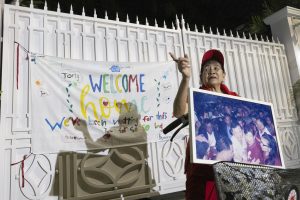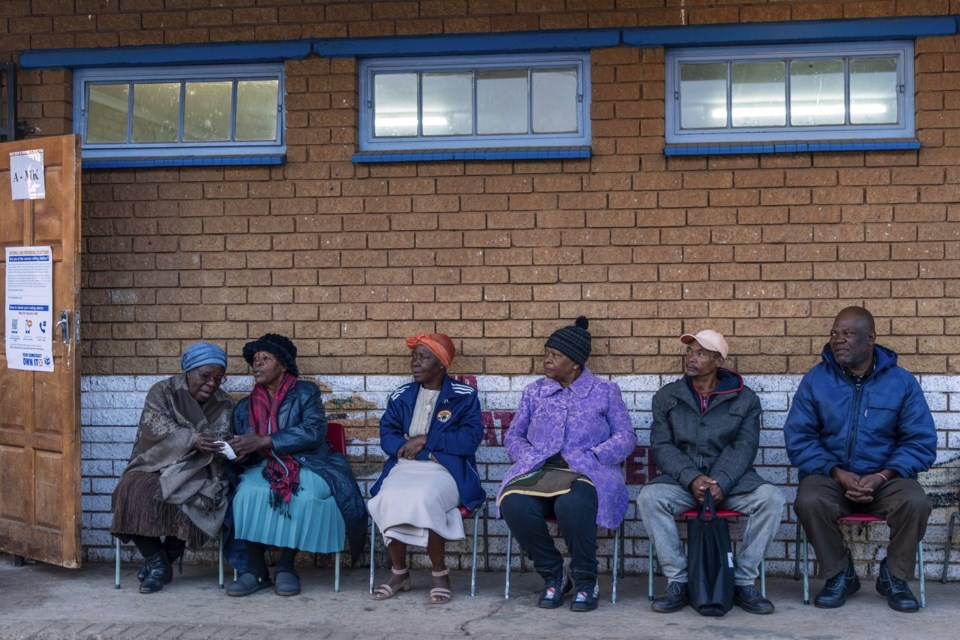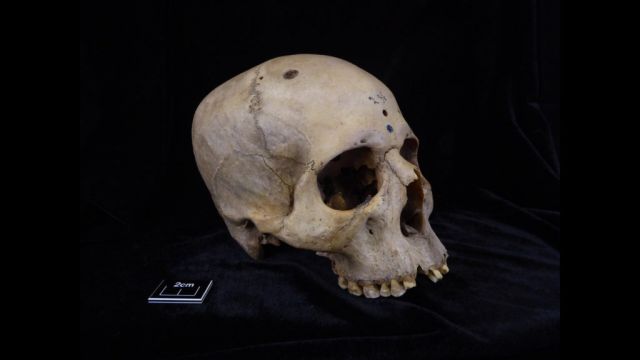Repress U., Class of 2024
Sometimes it seems as if we just can’t learn, even when we’re talking about America’s centers of higher learning, its colleges and universities. In mid-April — the day after being grilled and intimidated by House Republicans — Columbia University’s president Nemat “Minouche” Shafik decided not to listen to, or even negotiate with, her own students. Instead, she called in the police to dismantle a peaceful tent encampment protesting the horrors then underway in Gaza. For anyone who remembers the past history of on-campus antiwar protests, it was almost ludicrously predictable that, in doing so, she would launch a set of remarkably peaceful protests on more than 500 campuses nationwide that, despite the arrival of so many police on campus and nearly 3,000 arrests, have yet to end (and, in fact, have spread elsewhere on the planet).
And talking about not learning, imagine this: Last October 7th, the Israelis had a thoroughly grim set of war crimes committed against them by Hamas. Their response would prove to be a set of crimes so staggering that they’ve left Hamas’s horrors — and they were horrors of the first order — in the shade, removing almost all sympathy for Israel globally.
Sound familiar? And the thing we so often forget, whether the subject is Israel and Gaza or student protests in this country, is that when such horrors occur, there’s always a history that has, in some grim fashion, prepared the way for them.
With that in mind, consider Michael Gould-Wartofsky’s latest piece on the all too many increasingly armed camps that now pass for colleges and universities. Such campuses, barricaded, walled off, and sometimes occupied by local police, don’t come out of the blue either. In fact, Gould-Wartofsky has been writing about the creation of just such a “homeland security campus” for TomDispatch since 2008 — about the creation, that is, of what, by 2012, he was already calling Repress U.! ~ Tom Engelhardt
Repress U., Class of 2024:
How To Build a Homeland Security Campus in Seven More Steps
by Michael Gould-Wartofsky
The academic year that just ended left America’s college campuses in quite a state: with snipers on the rooftops and checkpoints at the gates; quads overrun by riot squads, state troopers, and federal agents; and even the scent of gunpowder in the air.
In short, in the spring semester of 2024, many of our campuses came to resemble armed camps.
What’s more, alongside such brute displays of force, there have been congressional inquisitions into constitutionally protected speech; federal investigations into the movement for divestment; and students suspended, evicted, and expelled, not to speak of faculty disciplined or simply dismissed.
Welcome to Repress U., class of 2024: a homeland security campus for the ages.
But don’t think it all only happened this spring. In reality, it’s an edifice that’s been decades in the making, spanning the George W. Bush, Barack Obama, Donald Trump, and Joe Biden administrations. Some years ago, in the wake of Occupy Wall Street, I wrote a step-by-step guide to how the original homeland security campus was created. Let me now offer an updated manual on the workings of Repress U. in a newly oppressive era.
Consider the building of just such a homeland security campus a seven-step process. Here they are, one by one.
Step 1. Target the movement for divestment.
As a start, unconditional government support for the state of Israel triggered a growing movement of student dissent. That, in turn, came to focus on the imperial entanglements and institutional investments of this country’s institutions of higher learning. Yet, instead of negotiating in good faith, university administrators have, with a few exceptions, responded by threatening and even inviting state violence on campus.
Nor, in a number of cases, did this offensive against the student left start, or end, at the campus gates. For instance, a targeted campaign against Students for Justice in Palestine (SJP) kicked off in October, when the State University System of Florida, working with Republican Governor Ron DeSantis, announced that “based on the National SJP’s support of terrorism… the student chapters must be deactivated.”
Private universities would soon join in with their own public displays of intolerance. Brandeis, Rutgers, George Washington, and Harvard all imposed similar sanctions on student groups. Columbia broke new ground by suspending not only SJP but also Jewish Voice for Peace after its student chapter held “an unauthorized event… that included threatening rhetoric.”
Over the course of the academic year, the student movement has been elevated, at least rhetorically speaking, to the level of a national security threat — one which has figured prominently in White House briefings and House Republican hearings. And by far the greater part of the threatening rhetoric overheard in recent weeks has been directed not by the movement, but at the movement.
“We have a clear message,” said House Committee on Education and Labor Chair Virginia Foxx (R-NC) in announcing the latest round of congressional inquisitions. “American universities are officially put on notice that we have come to take our universities back. No stone must go unturned while buildings are being defaced, campus greens are being captured, or graduations are being ruined.” Held on May 23rd, the hearings were an exercise in twenty-first-century McCarthyism, with House Republicans going on the warpath against “radicalized students” and “so-called university leaders.”
President Biden, when speaking of the student movement, has struck a hardly less belligerent tone, declaring that “vandalism, trespassing… shutting down campuses, forcing the cancellation of classes and graduations — none of this is a peaceful protest” and that “order must prevail.”
Step 2. Censor pro-Palestinian speech.
For all the talk of free speech and the right to protest, pro-Palestinian advocacy and antiwar activism have, in these last months, come to represent a notable exception to the rule. From the words of commencement speakers to the expressive acts of student occupiers, outright censorship has become the order of the day.
Take the case of Asna Tabassum, a graduating senior scheduled to give this month’s valedictorian address at the University of Southern California. When, on social media, Tabassum dared link to a page denouncing “racist settler-colonial ideology,” she was subjected to an organized smear campaign and ultimately barred from speaking at commencement.
Across the country, the cancellations have piled up. The Palestinian writer Mohammed El-Kurd was banned from speaking at the University of Vermont. The artist Samia Halaby saw her first American retrospective cancelled by the Eskenazi Museum of Art at Indiana University. And a group of Jewish students seeking to screen a film critical of Israel were denied space at the University of Pennsylvania.
Again, the trail of repression leads all the way back to Washington, D.C. Over the course of the past year, since the White House released its “National Strategy to Counter Antisemitism,” the Department of Homeland Security (DHS) and the Federal Bureau of Investigation (FBI) have shown an increasingly active interest in policing what can and can’t be said on campus.
According to the latest White House fact sheet, dated May 7th, “FBI and DHS have taken steps to expand and deepen engagements with campus law enforcement and others.” Such “engagement” has been evident for all to see in the recent crackdowns on campuses like Columbia’s, where the administration bragged, in a leaked internal memo, about “coordinating with the FBI.”
Step 3. Punish student protest.
It was not enough, however, for certain university administrators to ban Students for Justice in Palestine or censor pro-Palestinian speech. It was also imperative that they make students pay. The punishments have varied, ranging from interim suspensions to permanent expulsions to evictions from campus housing. What they have in common is a logic of retribution for even distinctly nonviolent student protests.
It became common practice for administrations to demand that students leave their on-campus encampments or be barred from graduating. In Harvard’s case, the Corporation went ahead and struck 13 pro-Palestinian students from the rolls anyway, just days before commencement.
Expulsions have also proliferated in the wake of the occupation of administration buildings, from Columbia’s Hamilton Hall to Vanderbilt’s Kirkland Hall. In justifying the expulsions, Vanderbilt’s chancellor helpfully explained, “My point of view had nothing to do with free speech.”
Last but not least, student dissidents have been the victims of doxxing, with their names and faces prominently displayed under the banner of “Leading Antisemites” on billboards in public places and on websites belonging to a far-right organization, Accuracy in Media. The group was recently revealed to be bankrolled to the tune of nearly $1.9 million by top Republican megadonors.
Step 4. Discipline faculty dissent.
Students have not been the only targets of such repression. They have been joined by faculty and other employees of colleges and universities, who have also faced disciplinary action for standing up for the rights of Palestinians. By one count, more than 50 faculty members have been arrested, while hundreds more have been disciplined by their employers.
The backlash began last fall with the suspension of two educators at the University of Arizona, then ramped up with the summary firing of two teaching assistants at the University of Texas at Austin. Their offenses? Sharing mental health resources with Palestinian, Muslim, and Arab students, who had specifically requested them in the wake of October 7th.
Further controversy attended the suspension of a tenured political science professor, Abdulkader Sinno, at Indiana University following an “unauthorized event” held by the school’s Palestine Solidarity Committee (which Sinno advised). Then came the removal of a noted Palestinian-American artist and activist, Amin Husain, from his adjunct position at New York University.
The University of Florida, for its part, circulated a directive threatening that “employees will be… separated from employment” should they be “found responsible for engaging in prohibited activities,” including “disruption,” indoor demonstrations, or outdoor encampments.
And Washington University in St. Louis, in April, placed six employees on leave after they were accused of participating in a Gaza solidarity protest and allowing “unauthorized persons” onto campus. That same day, another Palestinian-American professor, Steve Tamari, of Southern Illinois University, had nine ribs fractured and one of his hands broken while exercising his right to film the police.
Step 5. Lock the community out, but let the vigilantes in.
In the face of sustained student protest, universities have converted themselves into heavily guarded, gated communities, each with its private security force, and each with its own laws to enforce. “Harvard Yard will be closed today,” read a typical text, in bold red letters hanging from Johnston Gate. “Harvard affiliates must produce their ID card when requested.”
Other schools have responded to the encampments with a new architecture of control, extending from the metal barricades erected around George Washington’s University Yard to the plywood walls now surrounding New York University’s Stern School of Business. Still others, like Columbia, went as far as to cancel their major commencement ceremonies, given “security concerns.”
At the same time, the private firms entrusted with the public’s safety on college campuses have failed to intervene to keep far-right agitators out. Instead, as seen at the University of California, Los Angeles, and elsewhere, they have allowed vigilante violence to run wild.
At UCLA, on the night of April 30th, a gang of anti-Palestinian militants, wearing white masks and bearing blunt instruments and incendiary devices, were permitted to terrorize the school’s Palestine Solidarity Encampment for more than three hours before public officials felt compelled to take action. At least 16 serious injuries were reported. Not one of the attackers was detained.
“At first, I couldn’t understand why,” reported one eyewitness to the bloodshed. “But an hour in, and then two hours in, and then three hours in, it just reached the point where I was like, ‘UCLA knows this is happening, and they don’t care enough to protect their students.’”
“I thought I was going to die,” recalled another. “I thought I’d never see my family again.”
Step 6. Call the cops. Incite a riot.
Again and again, administrators have turned to the baton-wielding arm of the law to sweep Gaza solidarity encampments off school grounds. In calling the riot squads out on their own students, they have launched the most wide-reaching crackdown on campus protest in more than half a century, with some 3,000 arrests and still counting.
The military-style raid on Columbia’s Morningside campus, on April 30th, was just one case in point. It was one I watched unfold with my own eyes a few paces from occupied Hamilton Hall (or “Hind’s Hall“). It started with a group of students linking arms and singing “We Shall Not Be Moved,” and ended with 112 arrests and one gunshot fired from an officer’s Glock 19.
First, I watched three drones surveil the protesters from above, while a veritable army of beat cops, clad in riot gear, surrounded them on all sides. Next, I saw paramilitary squads with names like Emergency Service Unit and Strategic Response Group, backed by an armored BearCat, stage an invasion of the Columbia campus, while their counterparts laid siege to nearby City College.
In the end, law enforcement unleashed a full “use-of-force continuum” on students and workers, including that live bullet that “unintentionally” discharged from a sergeant’s service weapon “into the office they were attempting to gain access to.” Said one officer to another: “Thought we fucking shot someone.”
And Columbia was but the tip of the spear. A similar pattern has played out on campuses across the country. At Emory University, a Gaza solidarity camp was met with stun guns and rubber bullets; at Indiana and Ohio State universities, the police response included snipers on the rooftops of campus buildings; and at the University of Texas, gun-toting troopers enforced Governor Greg Abbott’s directive that “no encampments will be allowed.”
Step 7. Wage information warfare.
In most, if not all, American cities and college towns with such protests, the police, pundits, and elected officials alike have doubled down on their defense of Repress U., while vilifying the student movement in the media. In doing so, they’ve engaged in the kinds of “coordinated information activities” typical of a classical counterinsurgency campaign.
It began with House Republicans like Representative Elise Stefanik (R-NY), who dubbed the student protesters a “pro-Hamas mob,” and Speaker Mike Johnson (R-LA), who called them “lawless agitators and radicals.” Donald Trump took it a step further, claiming that “many of them aren’t even students, and many of them come from foreign countries. Thousands and thousands are from foreign countries… I’m like, ‘Where did these people come from?’”
Novel conspiracy theories, blaming the outbreak of campus protests on groups ranging from Hamas to Antifa (or even Jewish billionaire George Soros), have reverberated across the echo chambers of the right. But the agitprop didn’t stop at the far-right fringe. Democratic officials have since taken it up, too, with New York Mayor Eric Adams leading the charge: “What should have been a peaceful protest has been coopted by professional outside agitators.”
Within 24 hours of the raids on Columbia and CCNY, the New York Police Department had, in fact, produced its own live-action propaganda from the scene of the crime, concluding with these words of warning: “To any other individuals that wanna protest… If you’re thinking about setting up tents anyplace else… think again. We’ll come there. We’ll strike you. Take you to jail like we did over here.”
This is the future envisioned for America’s college campuses by the partisans of Repress U. It’s a future where what passes for “homeland security” takes precedence over higher learning, where order prevails over inquiry, and where counterinsurgency comes before community. Then again, the next generation — the one behind the “People’s University” protests — may well have other plans.
Follow TomDispatch on Twitter and join us on Facebook. Check out the newest Dispatch Books, John Feffer’s new dystopian novel, Songlands (the final one in his Splinterlands series), Beverly Gologorsky’s novel Every Body Has a Story, and Tom Engelhardt’s A Nation Unmade by War, as well as Alfred McCoy’s In the Shadows of the American Century: The Rise and Decline of U.S. Global Power, John Dower’s The Violent American Century: War and Terror Since World War II, and Ann Jones’s They Were Soldiers: How the Wounded Return from America’s Wars: The Untold Story.
Michael Gould-Wartofsky, a TomDispatch regular, is a writer, ethnographer, and human-rights activist from New York City and a postdoctoral research fellow at Columbia University. He is the author of The Occupiers and American Inquisitions (forthcoming in 2025), and has written for the Washington Post, the Daily Beast, Gizmodo, Jacobin, Mother Jones, The Nation, and Newsweek. You can read more of his work at mgouldwartofsky.com.
Copyright 2024 Michael Gould-Wartofsky







